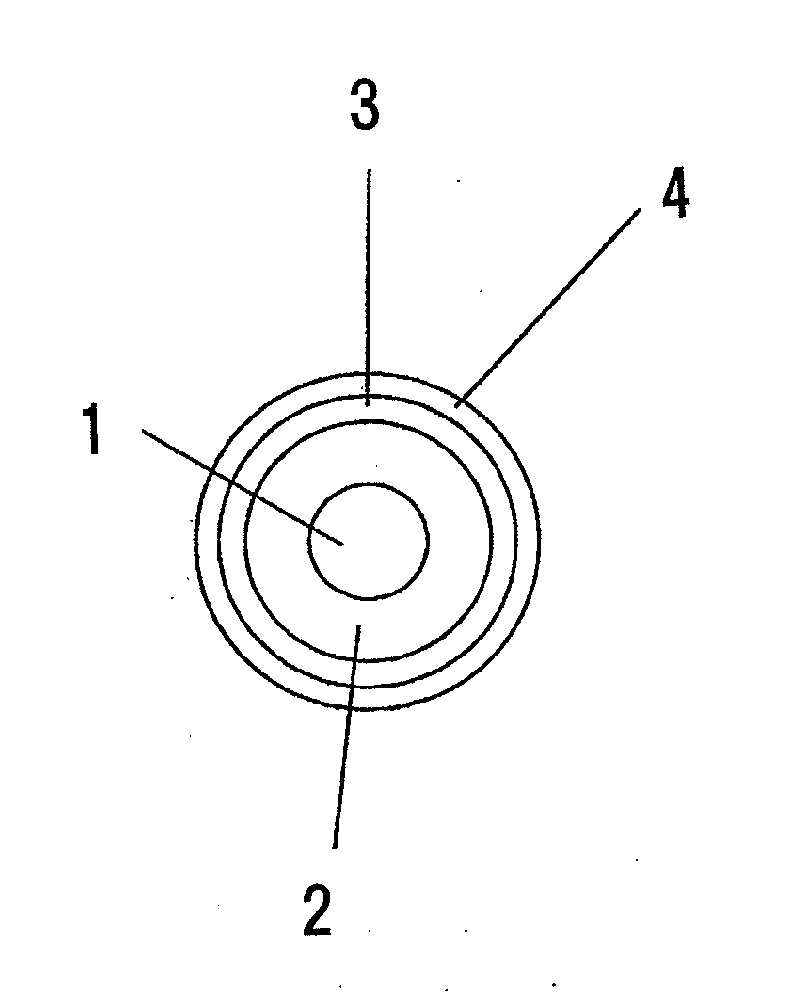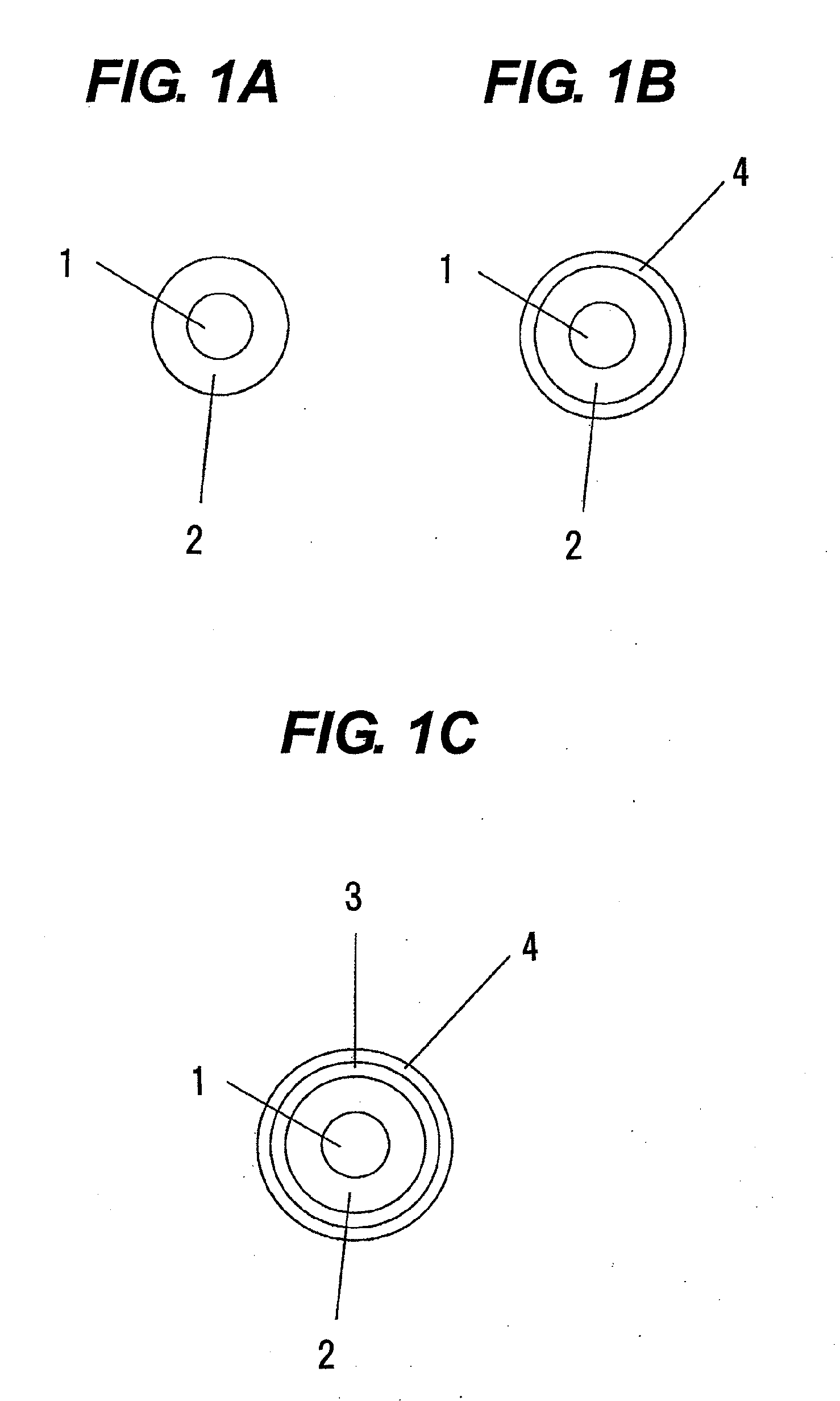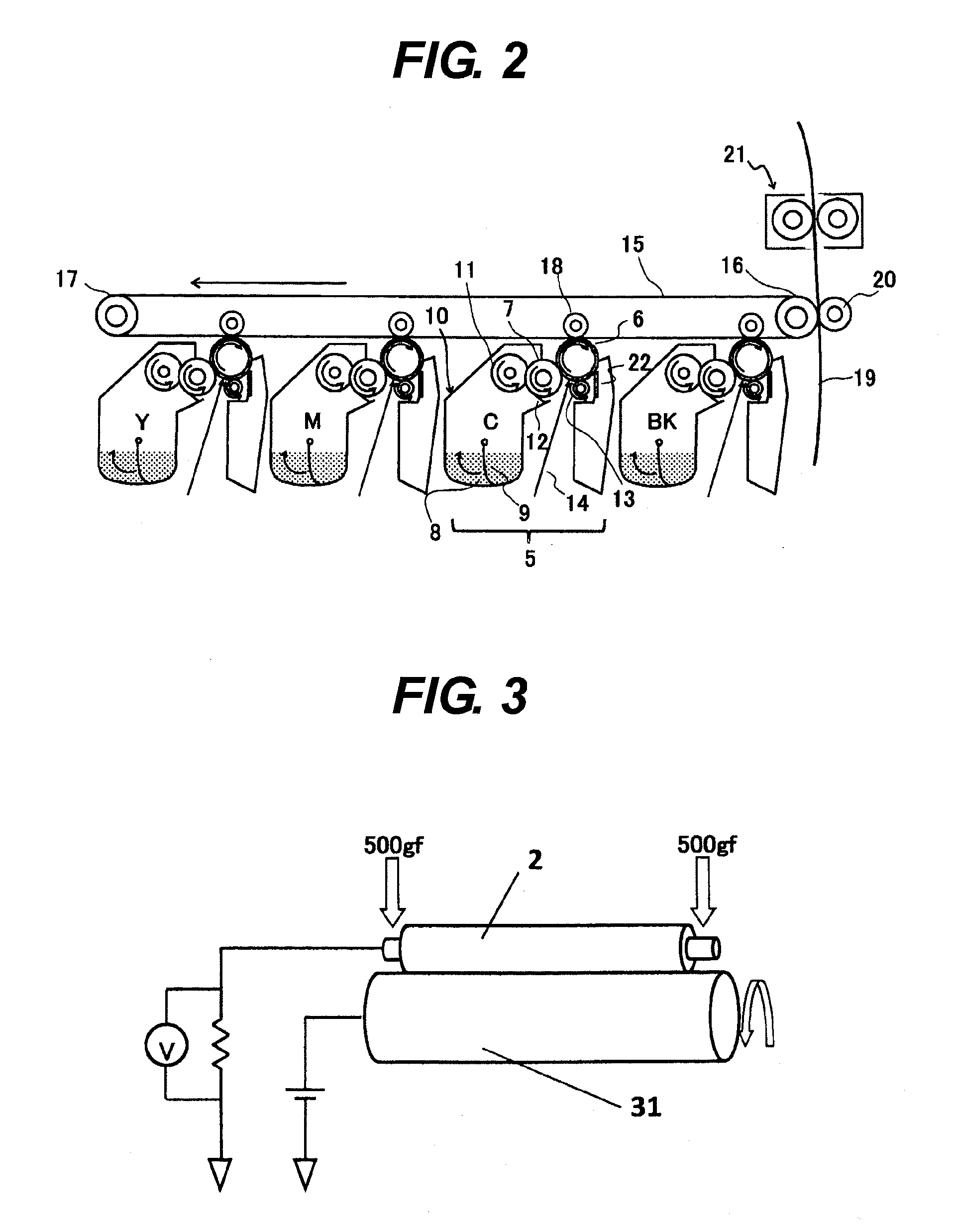Electrically conductive member, process cartridge and electrophotographic apparatus
a technology of electrophotography and electrically conductive components, which is applied in the direction of electrographic process apparatus, coatings, instruments, etc., can solve the problems of difficult uniform dispersion of electron conducting agents in binder resin, and difficult local uniform dispersion of electrically conductive layers. achieve the effect of stably forming high-grade electrophotographic images and not easily causing any bleeding of electrically conductive layers
- Summary
- Abstract
- Description
- Claims
- Application Information
AI Technical Summary
Benefits of technology
Problems solved by technology
Method used
Image
Examples
example 1
[0134]1. Preparation of Electrically Conductive Layer Coating Solution:
[0135]0.735 g (0.988 mmol) of polyethylene glycol diglycidyl ether (mass-average molecular weight: 744) and 0.057 g (0.384 mmol) of ethylene glycol bis(2-aminoethyl) ether as compounds having the structure represented by the formula (1)-1, 1.169 g (0.835 mmol) of amine-terminated modified NBR (trade name: ATBN 1300X35; available from Ube Industries, Ltd.) as a compound having the structure represented by the formula (2)-1 and 0.039 g (2 parts by mass based on 100 parts by mass of the binder resin) of the ion conducting agent a were dissolved in isopropyl alcohol (IPA) to prepare a “coating solution 1” having a solid content of 27% by mass. Incidentally, n1 of the formula (1)-1 was 13, and [m1:p1] of the formula (2)-1 was 74:26.
[0136]2. Coating of Electrically Conductive Layer Coating Solution:
[0137]The elastic roller A was, with its lengthwise direction set in the vertical direction, dipped in the coating solutio...
examples 2 to 47
[0147]Conductive rollers 2 to 47 were produced, and evaluated as charging rollers, in the same way as Example 1 except that, as raw materials for the electrically conductive layer, stated materials of those shown in Table 4 were used and the amounts of the materials used were changed to values shown in Tables 5-1 to 5-4. The results of evaluation are shown in Tables 7-1 to 7-5.
example 48
[0148]An electrically conductive member 48 was produced, and evaluated as a charging roller, in the same way as Example 1 except that the elastic roller A was changed for the elastic roller B. The results of evaluation are shown in Table 7-5.
PUM
 Login to View More
Login to View More Abstract
Description
Claims
Application Information
 Login to View More
Login to View More - R&D
- Intellectual Property
- Life Sciences
- Materials
- Tech Scout
- Unparalleled Data Quality
- Higher Quality Content
- 60% Fewer Hallucinations
Browse by: Latest US Patents, China's latest patents, Technical Efficacy Thesaurus, Application Domain, Technology Topic, Popular Technical Reports.
© 2025 PatSnap. All rights reserved.Legal|Privacy policy|Modern Slavery Act Transparency Statement|Sitemap|About US| Contact US: help@patsnap.com



